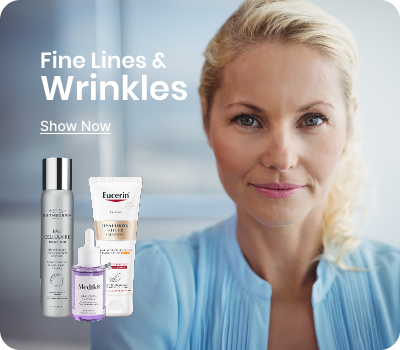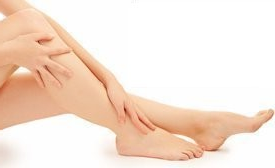
Your hair is an essential part of your identity, and maintaining it can significantly impact how you look and feel. A well-crafted hair care routine can do wonders for your hair, keeping it healthy, shiny, and strong. Whether you're dealing with dryness, damage, frizz, or simply trying to maintain your locks' natural beauty, this guide will walk you through the ultimate hair care routine. By understanding your hair type, using the right products, and caring for your scalp, you can give your hair the nourishment it deserves.
Introduction: Why a Good Hair Care Routine Matters
We often hear about skincare routines, but what about hair care? Just like our skin, our hair faces environmental stressors, styling damage, and product build-up. Without a consistent routine, hair can become dull, brittle, and prone to breakage.
A good hair care routine goes beyond washing your hair a few times a week. It’s about nourishing your hair from root to tip, using targeted treatments, and adapting your regimen to your specific needs. By putting a little extra effort into how you care for your hair, you can see noticeable improvements in texture, shine, and strength. In this blog post, we’ll explore the essential steps in creating the ultimate hair care routine to nourish and revitalise your locks.
Understanding Your Hair Type and Its Needs
The first step in creating a hair care routine that works is understanding your hair type. Your hair's texture, density, and porosity will determine how often you need to wash, condition, and treat it. Here's a breakdown of the main hair types and their specific needs:
- Straight Hair: This type tends to be shinier because natural oils travel easily down the hair shaft. However, it can also become oily quickly. Straight hair often benefits from lightweight products to avoid weighing it down.
- Wavy Hair: Wavy hair is a mix between straight and curly. It can be prone to frizz, and depending on the thickness, it may need extra moisture to stay smooth without becoming greasy.
- Curly Hair: Curly hair often lacks moisture since oils from the scalp struggle to reach the ends of the hair. Hydration is key for curls, and products should be rich but not heavy.
- Coily Hair: Coily or kinky hair is the most fragile and prone to breakage. It requires intense moisture and care, with gentle handling to avoid tangles and damage.
Common Hair Concerns
Common hair concerns such as dryness, damage, frizz, or an oily scalp can affect all hair types. Tailoring your routine to these concerns is vital for optimal hair health. For example, if you have an oily scalp, a lightweight shampoo that doesn’t strip your hair may be ideal. On the other hand, if you're battling dryness, you’ll want a deep-conditioning regimen to restore moisture.
By understanding your hair type and specific concerns, you can better choose the right products and steps to maintain your locks.
Step 1: Cleansing – Choosing the Right Shampoo
Cleansing your hair is the foundation of any good hair care routine. Shampooing helps remove dirt, oil, and product build-up that accumulate on your scalp and hair. However, the type of shampoo you choose can make a big difference in how your hair feels and looks.
Importance of Cleansing for Scalp Health
A clean scalp promotes healthy hair growth. When the scalp is clogged with oils or product residue, it can lead to dandruff, itching, and even hair loss. Choosing the right shampoo helps ensure that your scalp is clean and well-nourished.
How Often Should You Wash Your Hair?
The frequency of hair washing varies from person to person and depends on your hair type:
- Oily hair might need washing every day or every other day.
- Dry or curly hair can usually go longer between washes, about once or twice a week.
- Normal hair can be washed two to three times a week.
Selecting a Shampoo for Your Hair Type
- Sulfate-Free: Best for those with dry or sensitive hair as sulfates can strip natural oils from your hair.
- Moisturising Shampoo: Ideal for curly or dry hair that needs extra hydration.
- Clarifying Shampoo: Use occasionally to remove heavy product build-up, but avoid frequent use as it can be drying.
Finding a shampoo that works with your hair type ensures that you cleanse your hair without stripping away essential moisture.
Step 2: Conditioning – Hydration and Repair
Conditioning is one of the most important steps for keeping your hair healthy, hydrated, and manageable. Conditioners work by adding moisture back into your hair after washing, helping to smooth the hair cuticle and reduce frizz.
The Role of Conditioners in a Healthy Hair Routine
Conditioners help detangle, smooth, and nourish the hair, making it easier to manage. They work by coating the hair shaft, which helps reduce friction during combing and styling, preventing breakage.
Choosing the Right Conditioner
- For Dry Hair: Look for rich, moisturising conditioners that contain natural oils or butters like shea butter, coconut oil, or argan oil.
- For Damaged or Colour-Treated Hair: Opt for conditioners with protein or keratin to strengthen the hair and prevent breakage.
- For Fine or Oily Hair: Use lightweight, volumising conditioners that won’t weigh your hair down.
Leave-In Conditioners and Deep Conditioning Treatments
- Leave-In Conditioners are great for providing an extra layer of moisture and protection, especially for curly or coily hair.
- Deep Conditioning Treatments should be used once a week to repair damage, restore moisture, and revitalize the hair. Look for treatments that contain ingredients like keratin, biotin, or nourishing oils for maximum benefits.
Step 3: Nourishing Treatments – Hair Masks and Oils
To give your hair that extra dose of nourishment, incorporate hair masks and oils into your routine. These treatments can repair damage, add shine, and deeply hydrate your locks.
Benefits of Using Hair Masks
Hair masks are intensive treatments that deliver moisture, protein, and other nutrients deep into the hair shaft. They’re especially beneficial for dry, damaged, or chemically treated hair. Regular use can make a noticeable difference in the texture and strength of your hair.
How to Incorporate Oils in Your Hair Care Routine
Oils are a powerful addition to your hair care routine. Different oils serve different purposes:
- Argan Oil: Known for its moisturising and shine-enhancing properties, it's great for dry or frizzy hair.
- Coconut Oil: Penetrates deeply into the hair shaft, providing long-lasting hydration and reducing protein loss.
- Jojoba Oil: Mimics natural scalp oils, making it ideal for moisturising the scalp and balancing oil production.
DIY vs. Shop-Bought Treatments
DIY hair masks and oil treatments can be a fun and cost-effective way to pamper your hair, but shop-bought treatments are often formulated with specific ingredients that target particular concerns. A balance of both can work well in your routine, with DIY treatments for regular maintenance and shop-bought masks for more intensive care.
Step 4: Daily Hair Care Tips for Long-Term Nourishment
Beyond your cleansing and conditioning routine, there are several daily hair care practices that can help keep your locks healthy and strong.
Detangling Without Causing Damage
Wet hair is more prone to breakage, so always detangle carefully. Use a wide-tooth comb or a detangling brush, starting at the ends and working your way up to the roots. Applying a leave-in conditioner or detangling spray can make the process easier and reduce damage.
Hairbrush Types and Techniques
- Boar Bristle Brushes: Best for distributing natural oils from your scalp to the rest of your hair, adding shine and reducing frizz.
- Paddle Brushes: Great for straight hair or blow-drying, as they help smooth the hair.
- Wide-Tooth Combs: Ideal for detangling curly or wet hair, minimizing breakage.
Protecting Hair While Sleeping
The way you treat your hair while you sleep can have a significant impact on its health:
- Silk Pillowcases: Reduce friction, preventing breakage and frizz while you sleep.
- Protective Hairstyles: Braids, buns, or twists help keep your hair tangle-free and reduce stress on the hair shaft overnight.
Step 5: Scalp Care – The Foundation of Healthy Hair
Healthy hair starts with a healthy scalp. A well-nourished, clean scalp is essential for hair growth and overall hair health.
Why Scalp Health Matters
The scalp is where your hair follicles live, and if it’s not in good condition, hair growth can be stunted. Issues like dandruff, excessive oil, or dryness can all affect the quality of your hair.
Just like your skin, your scalp benefits from regular exfoliation to remove dead skin cells and product build-up. Use a scalp scrub or a gentle exfoliating shampoo once a week to keep your scalp fresh. Scalp massages are also great for promoting blood circulation, which encourages hair growth. Look for products containing tea tree oil, salicylic acid, or other gentle exfoliants to keep your scalp healthy and balanced.
Step 6: Maintaining a Healthy Diet for Strong, Shiny Hair
The food you eat can directly affect the health of your hair. A balanced diet rich in vitamins, minerals, and hydration is key to maintaining strong, shiny locks. Just like your body, your hair needs certain nutrients to grow strong and healthy. Deficiencies in vitamins like biotin, vitamin E, and iron can lead to hair thinning, dullness, and even hair loss.
Key Vitamins and Minerals for Hair Growth
- Biotin: Supports hair growth and strengthens hair.
- Vitamin E: Improves circulation in the scalp and helps prevent oxidative stress, which can damage hair follicles.
- Iron: Promotes hair growth by supporting the production of red blood cells, which carry oxygen to the hair follicles.
Hydration’s Role in Maintaining Healthy Locks
Drinking plenty of water helps keep your hair hydrated from the inside out. Dehydration can lead to dry, brittle hair, so aim for at least eight glasses of water a day to maintain your hair’s elasticity and shine.
Conclusion: Consistency is Key to Gorgeous Hair
Building the perfect hair care routine takes time, but the results are worth it. By understanding your hair type, selecting the right products, and sticking to a consistent routine, you can nourish and revitalise your locks, no matter what state they’re in today. Remember, patience is key. With dedication and the right approach, your hair will be healthier, shinier, and stronger in no time.





